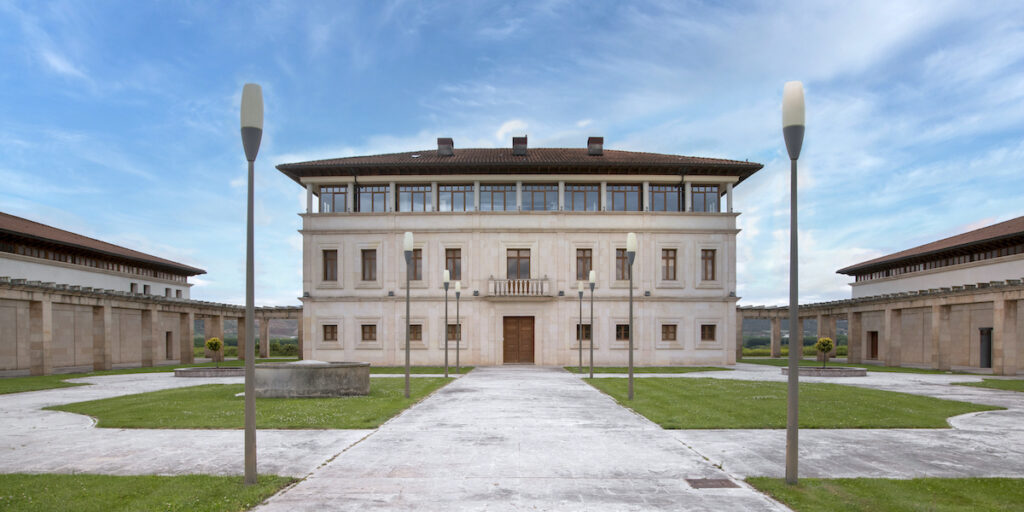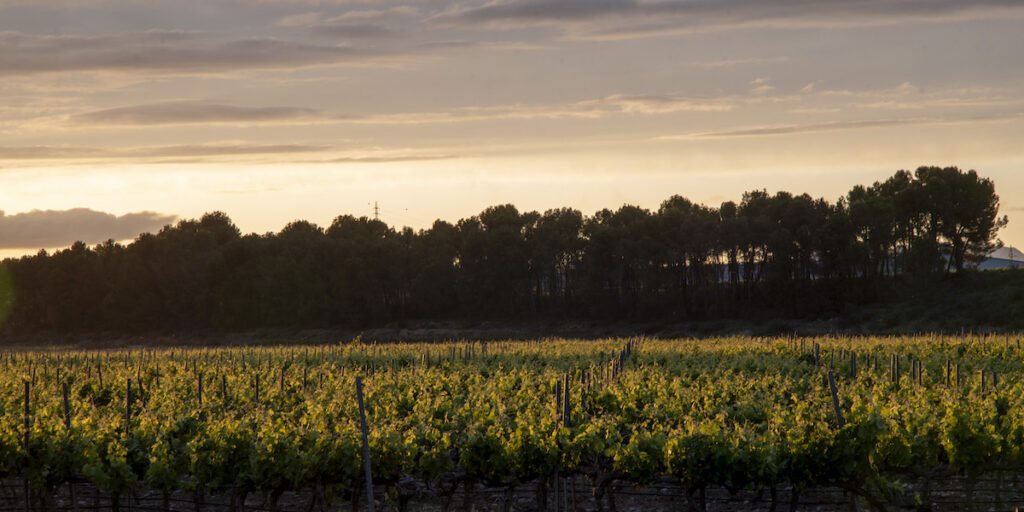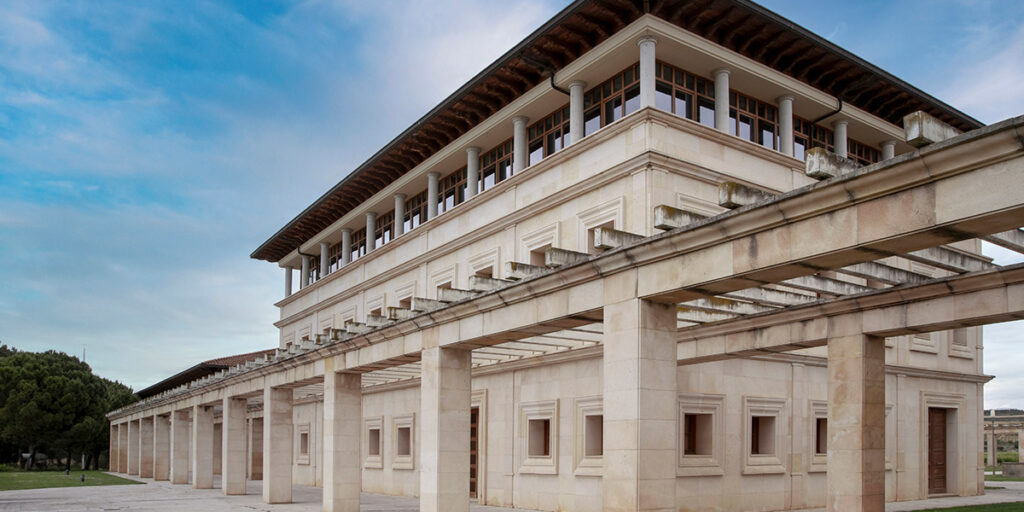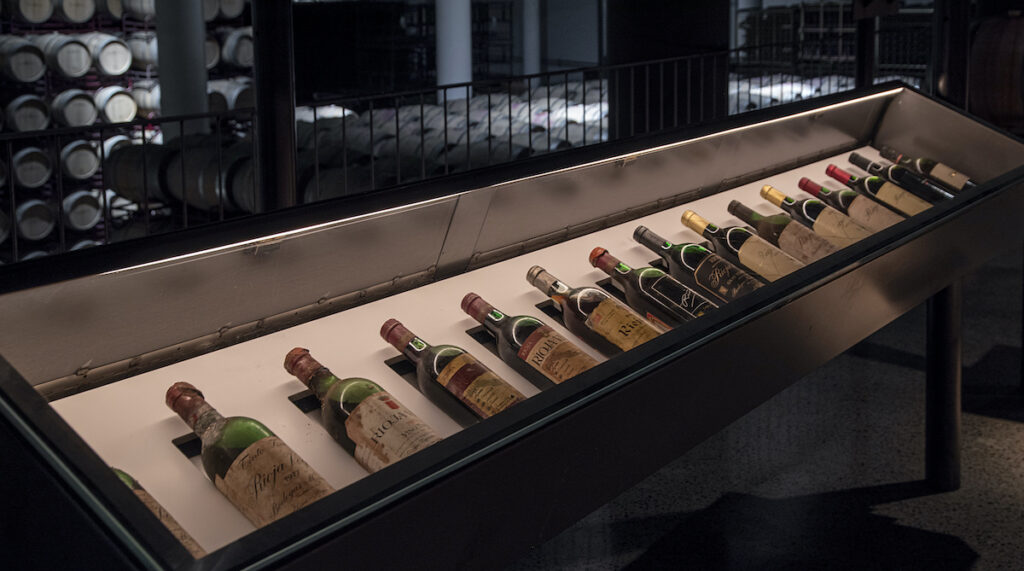Felipe Ugalde, a visionary entrepreneur ahead of his times, made his dream come true by making fine wines embedded in the Rioja tradition, with great respect for this land and it´s environment. Along with several other winemakers, he was a pioneer in creating the first exporters association in the Rioja region.
THE ORIGINS OF
A CENTENARY WINERY
1882
1898
Phylloxera arrives. The financial damages were so important that the revenues earned went from thirty million pesetas in 1890 to a mere two and half million pesetas by 1910, causing over 43,000 people to emigrate from the region. Two decades later, the agricultural sector at large, and the viticultural in particular had still not recovered from this body blow.
1907
Creation of the Rioja Exporters Union. Felipe Ugalde was a founding member and President of this Union.
1921
Years later, Ugalde registered his flagship Brand, Rioja Vega, in the official Spanish Brand Registry, beginning a long history of commercial success both in the domestic market and abroad. Rioja Vega is still today one of only four wineries allowed to use the Rioja name in their brand, as they existed prior to the creation of the Rioja D.O.Ca. appellation.
1925
Creation of the Rioja Regulatory Council. On June 6th 1925 Spain legally approved the creation of the Rioja Denomination of Origin and the Regulatory Council that would implement it’s norms and regulations, the oldest in Spain along with Jerez/Sherry.
1949
Significant investments were made in the winery: new concrete tanks for fermenting wines, new oak barrels for ageing, as well as new offices. At the same time, major steps forward were made in sales and distribution in major markets, such as the Spanish domestic along with key export markets like Germany, Great Britain, Denmark, USA and Switzerland.
1983
Bodega Rioja Vega became a part of the Príncipe de Viana group, with wineries in Navarra and Castilla y Leon as well as Rioja. All of them share the same respect for their winemaking traditions and the same passion for quality and for all things well made.
2001
Felipe Ugalde´s dream is still alive a mere 10 kilometres away from Logroño, in a place called “La Venta de Jalón”, with a kind of “chateau” concept where the winery is surrounded by over 70 hectares of vineyards. A privileged place for growing vines, with poor soils and an Atlantic influenced climate that provide the wines from this area with a unique character.
Vineyard
diversity
At the heart of all we do are the different plots that make up our vineyards, planted at different altitudes and with different soils and climates, providing low yields and great concentration we can source from.
A winery
favouring each terroir
The Rioja Vega winery is located between the Ebro River and the Sierra de Cantabria, surrounded by over 70 hectares of Tempranillo, Garnacha and Graciano vines in a privileged place to grow them.
Our winery is an impressive set of three buildings, connected above by pergolas and paved courtyards and underground by the wine cellars housing barrels and bottle racks alike. The offices are all in the central three-story building that includes a restaurant area with panoramic views on the top floor.
The winemaking and bottling facilities are housed in two symmetrical buildings flanking the central office building.
The winemaking facilities at Rioja Vega combine state of the art modern equipment to help us preserve the traditional essence of Rioja that has made it a worldwide success. Terroir management helps no end towards making fine Rioja wines of unique character.
Winemaking tradition
adapted to
modern times
Rioja Vega uses modern winemaking technology adapted to traditional Rioja winemaking methods. This way, we can offer both the classic Rioja style so well loved and recognised by consumers for years, as well as a more modern approach, working with lesser-known indigenous varieties that provide a new experience that widens the options for enjoying a true Rioja wine with a difference.
Sustainability and best practice
viticulture commitment
For over 15 years, we’ve carried out ground breaking sustainability projects in order to minimise our environmental impact on the land and its vines.
Sustainability and environmental care have been a fundamental pillar of our activity through the years. It´s been over a decade now that we installed our first monitoring sensors in our vineyards in control stations that not only gave us meteorological data each season, but also vital facts about the state of health of the vines in real time. This information has helped us reduce the use of our energy and hydric resources between 20 and 30%.
Our commitment to preserving healthy soils took us to implement a Big Data soil management system called BIGSOTSBIOMA, crossing information about the climactic conditions, and the readings obtained about soil, water and plant health information during the season. This way we ensure that we maintain soil biodiversity, and it helps us to control plant diseases so as to guarantee a long, healthy life for our vines.
The research programs we participate in ensure we can stay committed to sustainability on a daily basis:

Implementing measures to rationalise water consumption and energy savings. Such as drip irrigation systems and more efficient new machinery for the viticulture and winemaking teams.

We reduce the use of pesticides and other plague control chemicals, by using organic fertilizers and sexual confusion devices for plague control.

We treat residual waste matter with water purifiers.

We manage improvements in biodiversity and landscape, growing local varieties well adapted to their environment, through precision viticulture methods.







